| Jan.
05, 2004:
Since
by now, the inner tub was almost completely useless, I cut away the
sides
and the rear seat. The car will have a bench seat at the front too, so
I cut away the cast-in center console of the Impala SS.
|
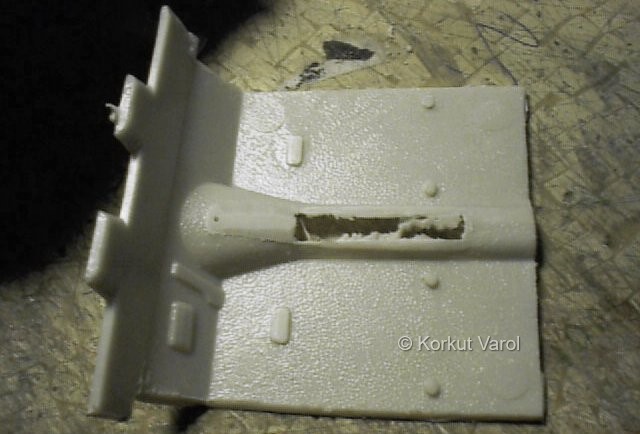
|
| I
glued a piece of styrene in the void thus created and sanded it to
shape. |
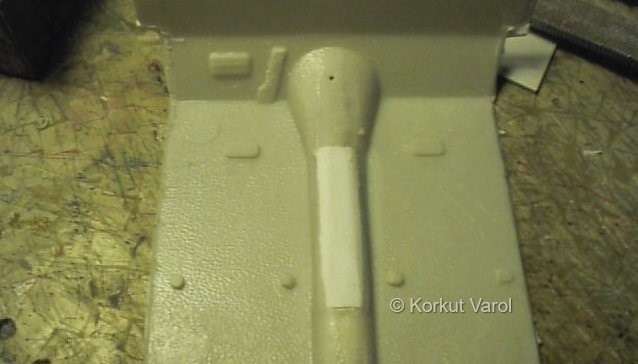
|
| I
could not use the thick windshield, so to cut it from acetate, I
tailored
a piece of cardboard in place. Beforehand, I cut and glued
the strips
on the insides of the A-pillars and the roof, to hold the windshield in
place. |
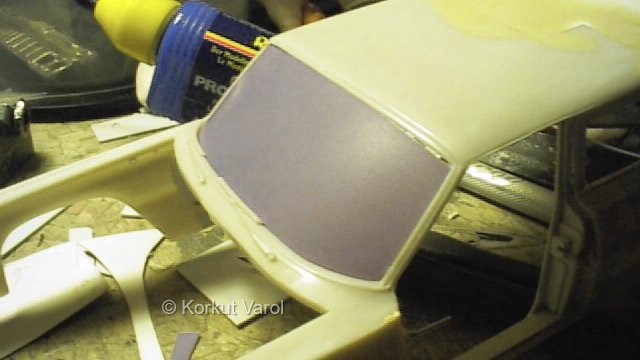
|
| Jan.
09, 2004:
I cut
and glued the strips on the rear back and both sides of the roof.
|
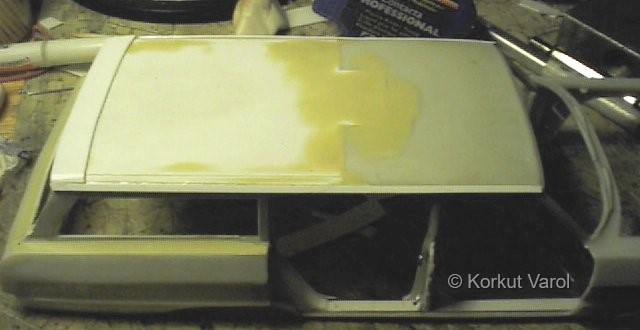
|
| Then
I cut and glued the drip rails. |
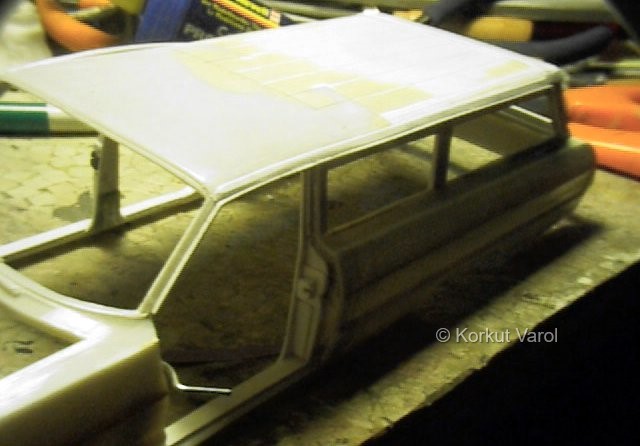
|
| and
finally, the strips on the roof. |
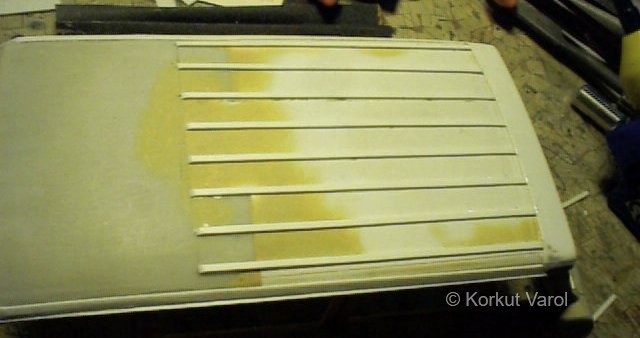
|
| Jan.
11, 2004:
I shaped
the tip of a cutter to a slanted section to shave the sides of the ribs
on the roofs to a trapezoid section.
|
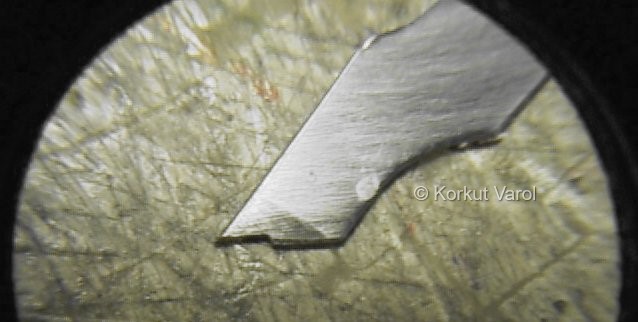
|
| Then
I shaved the rib sides to form the trapezoid section. Sorry, I don't
have
the means to take that much close-up... |
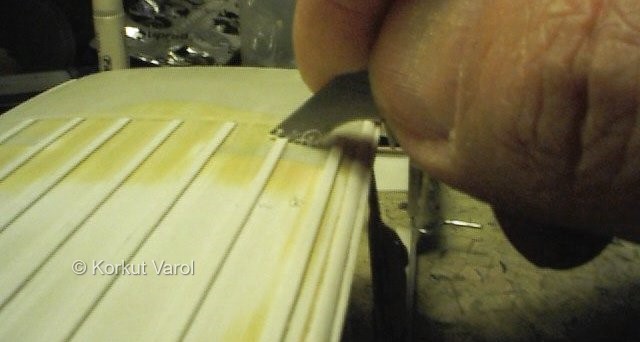
|
| Jan.
18, 2004:
I began
manufacturing the internal panels. This one is the left rear panel. By
trial-and-error tailoring, I formed the main parts.
|

|
| Then
I glued the part in place temporarily, to tailor the remaining on the
body. |
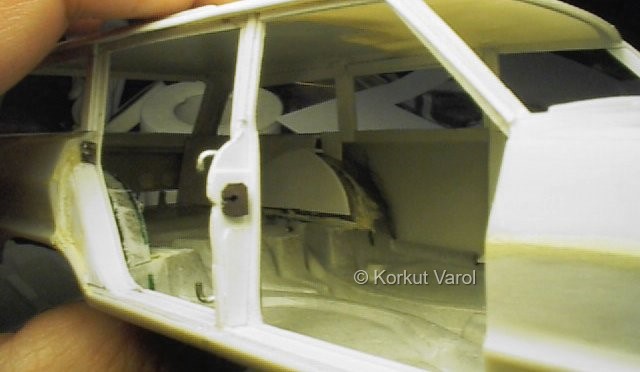
|
| Then
I switched to the rear right internal panel. |
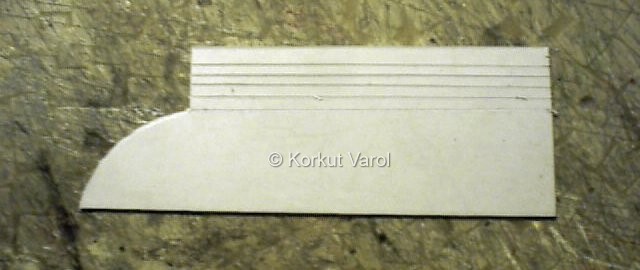
|
| ..and
fixed it temporarily too. |
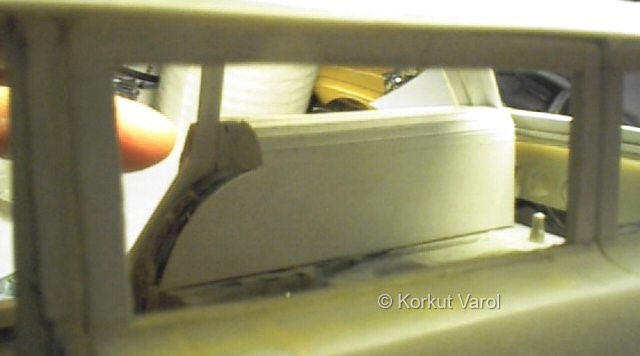
|
| Jan.
23, 2004:
The
installation of internal panels was a problem. Since the car had
opening
doors and a unitary "inner tub" was not possible, the panels had to be
fixed to the body separately. They could not be glued to the body
before
painting, and after completion of painting the body and inner panels,
installation
with some glue had the risk of misfits and possible glue mess. So I
thought
of installing the inner panels with pins. I prepared some numbers of
styrene
blocks with 2.5 mm drilled holes, and some pieces of 2.4 mm styrene
rods.
|
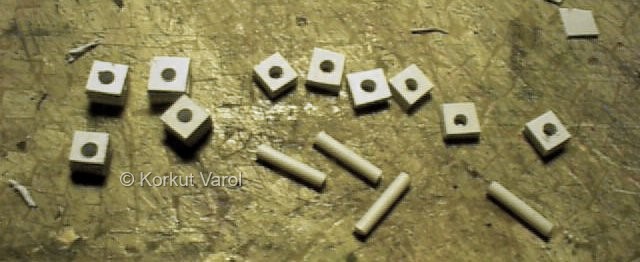
|
| I
prepared the pins with pedestal plates, to ensure rigid glueing (to
take
up moment loads at the rod base) of the pins to the panels. |
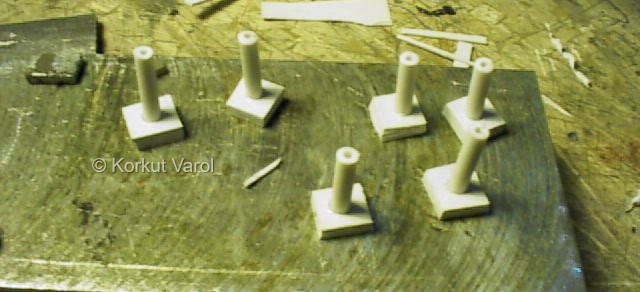
|
| Then
I glued the pins (2 for each panel) to convenient places on the inner
panels.
I set them dry. |
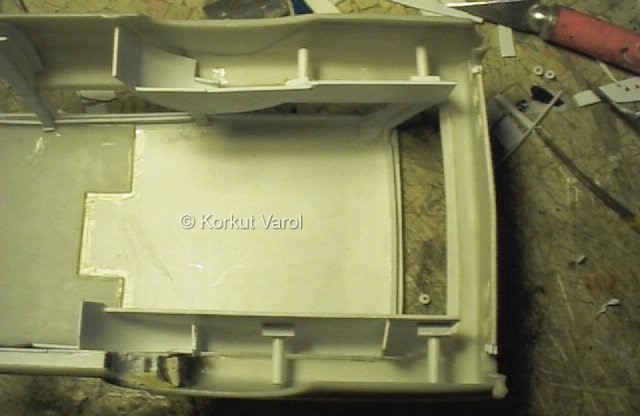
|
| Then
I took off the inner panels, put on the mating blocks and being
extremely
careful not to spread the glue to the rod, I glued the blocks on the
body.
To ensure that the rods do not touch the body, they were cut a bit
short
(see pic above). |

|
| After
the glue dried, I took off the inner panel. Now the panel could be
mounted
and dismounted easily, whenever needed. |
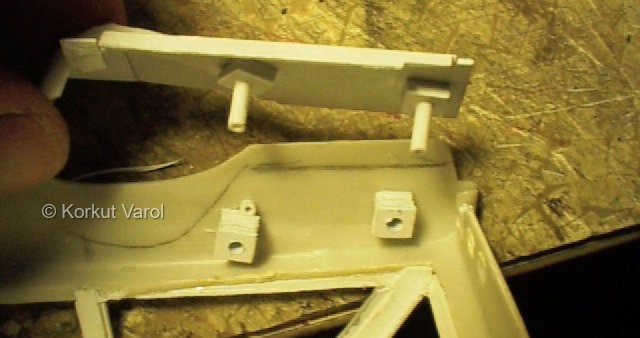
|
| The
rear and left rear door inner panels were done in the same manner but a
different way. I first glued the female blocks on the body, and after
drying
put the rod blocks in place and glued the inner panels on the rod
blocks.
This way, no accidental glueing of the rod and female blocks was
possible. |
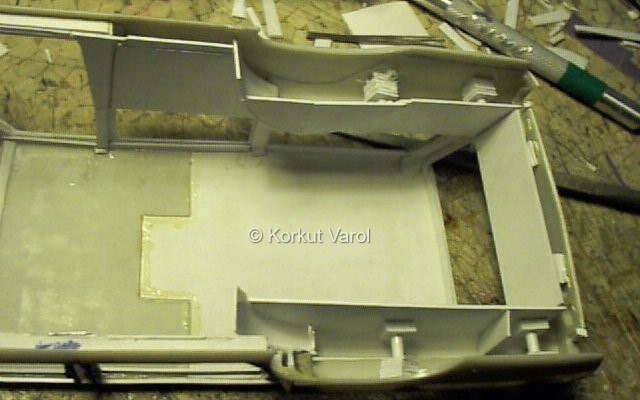
|
| Feb.
02, 2004:
The
installation of the dashboard required good tailoring to fit in the
narrowed
space due to the hinges and front kicker plate. Also, it sat low due to
the original thick windshield. Now that the windshield would be from
acetate,
the dashboard had to be positioned to make up for the gap too. So I had
to trim the dashboard for its new position.
|
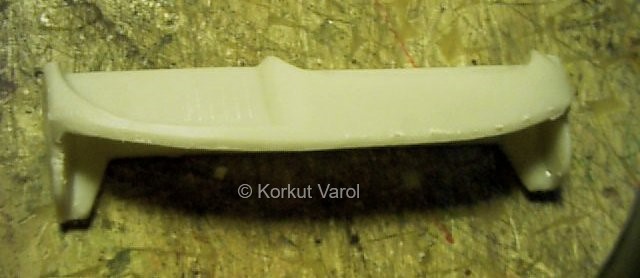
|
| The
dashboard also had its share of rods and blocks installation. The
female
blocks will be on the back of the firewall. |
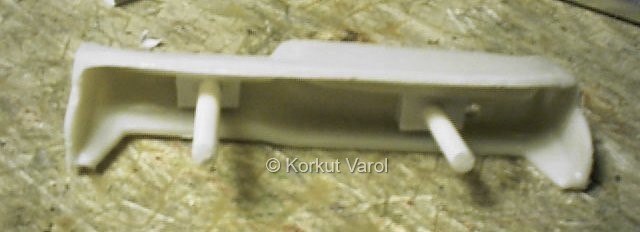
|
| Meanwhile,
the door trim panels were treated the same way for mounting and
dismounting. |
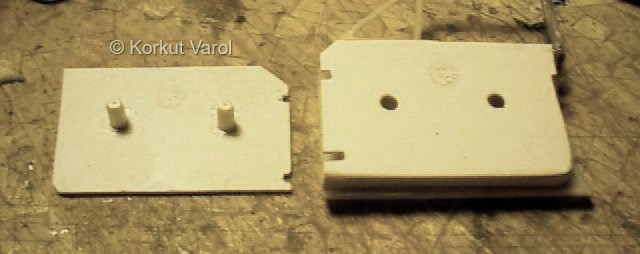
|
| The
rear inner panels were smoothed at the edges. |
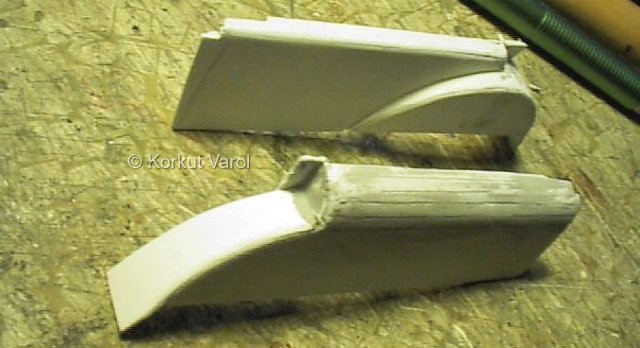
|
| I
then glued the firewall into place... |
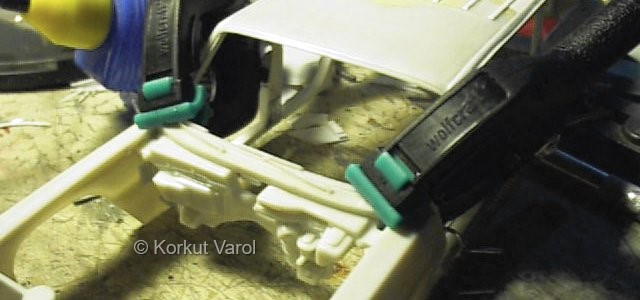
|
| ..and
constructed the dashboard assembly. |

|
|
|

|
 
|



